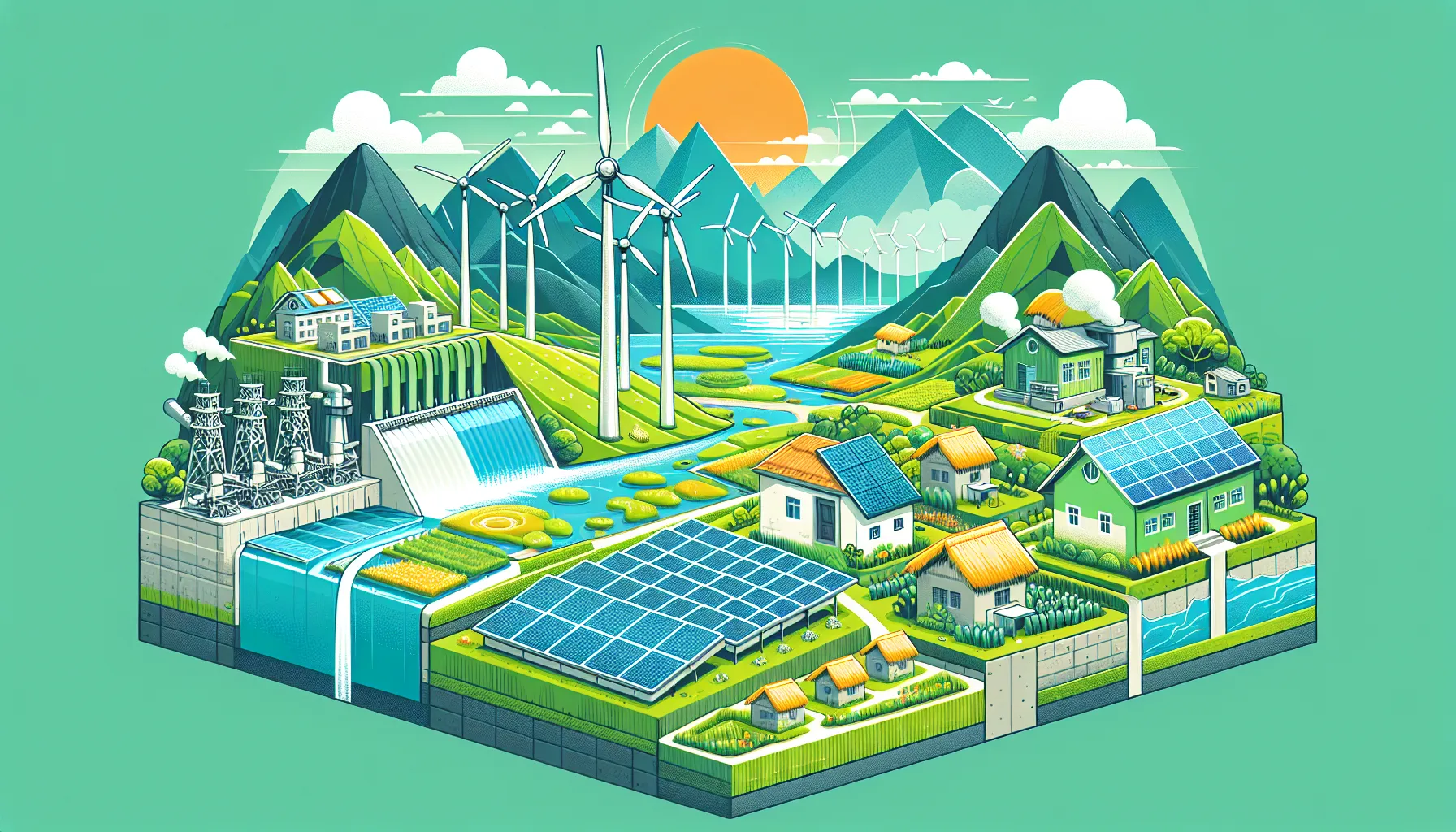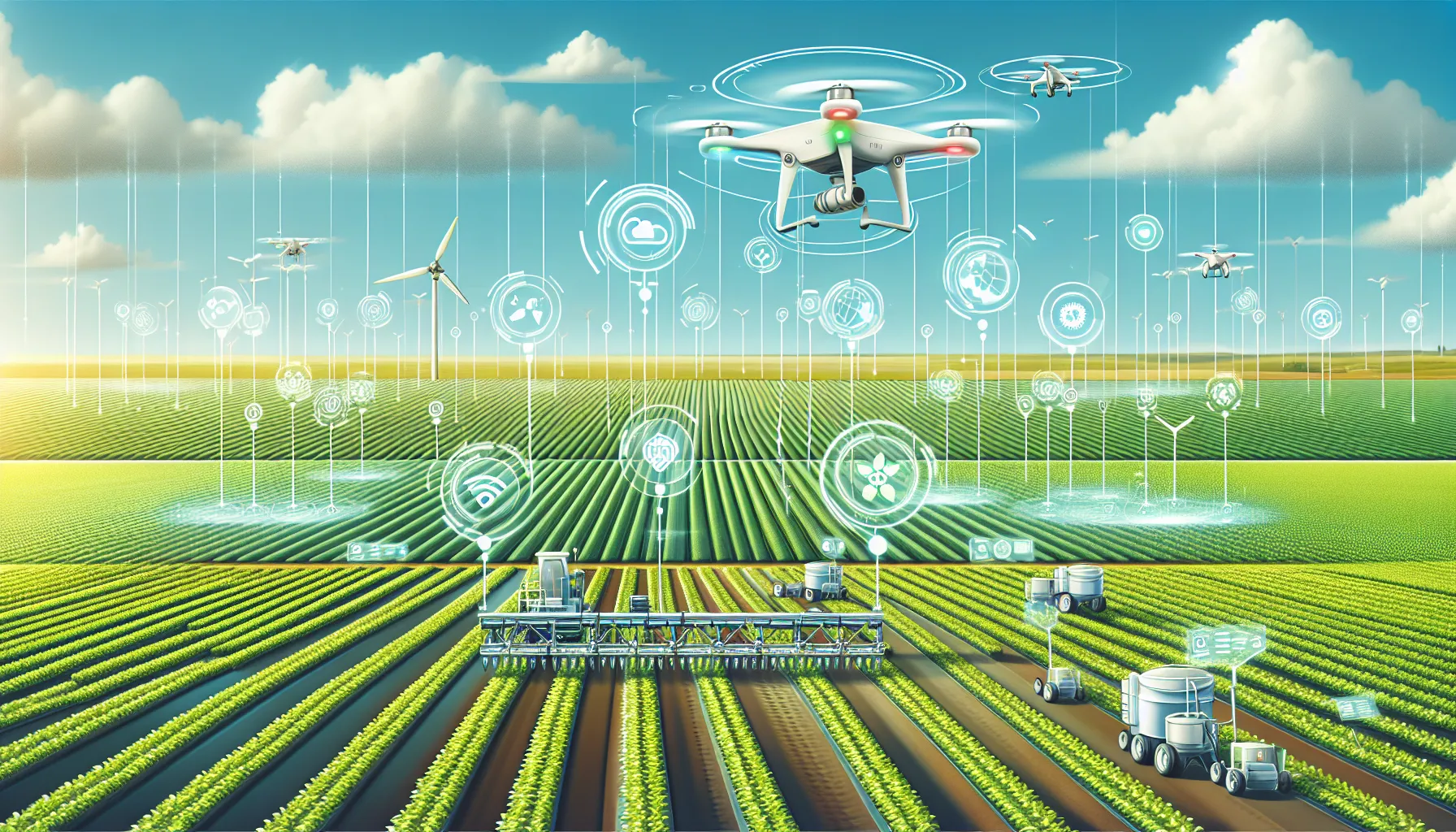Welcome to our IELTS Reading practice session focused on the crucial topic of “Renewable Energy in Developing Countries”. This comprehensive practice test will help you sharpen your reading skills while exploring an essential global issue. Let’s dive into the world of sustainable energy solutions and their impact on emerging economies.
Nội dung bài viết
- Introduction to the IELTS Reading Test
- Passage 1 (Easy Text): The Rise of Renewable Energy in Developing Nations
- Questions 1-5: Multiple Choice
- Questions 6-10: True/False/Not Given
- Passage 2 (Medium Text): Innovative Approaches to Renewable Energy Implementation
- Questions 11-14: Matching Headings
- Questions 15-19: Sentence Completion
- Question 20: Short Answer Question
- Passage 3 (Hard Text): The Socio-Economic Implications of Renewable Energy Transition in Developing Economies
- Questions 21-26: Matching Information
- Questions 27-32: Yes/No/Not Given
- Questions 33-35: Summary Completion
- Questions 36-40: Multiple Choice
- Answer Key
- Passage 1
- Passage 2
- Passage 3
 Renewable energy solutions in developing countries
Renewable energy solutions in developing countries
Introduction to the IELTS Reading Test
The IELTS Reading test consists of three passages of increasing difficulty, designed to assess your reading comprehension skills. Today’s practice focuses on renewable energy in developing countries, a topic that frequently appears in IELTS exams due to its global significance.
Passage 1 (Easy Text): The Rise of Renewable Energy in Developing Nations
Renewable energy is rapidly gaining ground in developing countries, offering a sustainable alternative to traditional fossil fuels. As these nations strive to meet their growing energy demands, many are turning to clean energy sources such as solar, wind, and hydropower. This shift is driven by several factors, including the decreasing costs of renewable technologies, the need for energy security, and the global push to combat climate change.
In recent years, countries like India, China, and Brazil have made significant strides in adopting renewable energy. These nations are not only investing in large-scale projects but also promoting small-scale, decentralized solutions that can bring electricity to remote areas. For instance, solar home systems and mini-grids are providing power to rural communities that were previously off the grid.
The benefits of this renewable energy transition are manifold. It reduces dependence on imported fossil fuels, creates jobs in the green energy sector, and helps mitigate the environmental impact of energy production. Moreover, it aligns with global efforts to achieve the United Nations Sustainable Development Goals, particularly those related to affordable and clean energy.
However, the path to widespread renewable energy adoption is not without challenges. Developing countries often face obstacles such as limited access to financing, lack of technical expertise, and inadequate infrastructure. Overcoming these barriers requires concerted efforts from governments, international organizations, and the private sector.
Despite these challenges, the momentum behind renewable energy in developing countries continues to grow. With ongoing technological advancements and increasing global support, the future of clean energy in these nations looks promising, paving the way for a more sustainable and equitable energy landscape.
Questions 1-5: Multiple Choice
Choose the correct letter, A, B, C, or D.
-
What is driving the shift towards renewable energy in developing countries?
A) Increased fossil fuel production
B) Decreasing costs of renewable technologies
C) Reduced energy demand
D) Abundance of non-renewable resources -
Which of the following is NOT mentioned as a benefit of renewable energy adoption in developing countries?
A) Job creation
B) Reduced dependence on imported fuels
C) Increased fossil fuel exports
D) Environmental protection -
What type of renewable energy solution is specifically mentioned for rural communities?
A) Large-scale power plants
B) Solar home systems and mini-grids
C) Nuclear energy
D) Geothermal power stations -
According to the passage, what is one of the main challenges faced by developing countries in adopting renewable energy?
A) Oversupply of energy
B) Lack of sunlight and wind resources
C) Limited access to financing
D) Excessive technical expertise -
The passage suggests that the future of renewable energy in developing countries is:
A) Uncertain and risky
B) Promising and growing
C) Declining rapidly
D) Completely dependent on fossil fuels
Questions 6-10: True/False/Not Given
Do the following statements agree with the information given in the passage?
Write:
TRUE if the statement agrees with the information
FALSE if the statement contradicts the information
NOT GIVEN if there is no information on this
-
Renewable energy adoption in developing countries is solely driven by environmental concerns.
-
Countries like India, China, and Brazil are leading in renewable energy adoption among developing nations.
-
The transition to renewable energy helps developing countries achieve some of the UN Sustainable Development Goals.
-
All developing countries have embraced renewable energy with equal enthusiasm.
-
The private sector plays no role in overcoming the challenges of renewable energy adoption in developing countries.
Passage 2 (Medium Text): Innovative Approaches to Renewable Energy Implementation
The implementation of renewable energy in developing countries is not merely a matter of replicating models from industrialized nations. Instead, it requires innovative approaches tailored to the unique challenges and opportunities present in these diverse contexts. This adaptation process has led to the emergence of creative solutions that are reshaping the energy landscape in unexpected ways.
One notable trend is the rise of community-based energy projects. In many developing countries, rural communities are taking charge of their energy future by establishing cooperatives or social enterprises focused on renewable energy. These initiatives often combine local knowledge with modern technologies, resulting in solutions that are both effective and culturally appropriate. For example, in Bangladesh, a network of women entrepreneurs is selling and maintaining solar home systems, simultaneously addressing energy poverty and gender inequality.
Another innovative approach is the integration of renewable energy with existing industries. In agriculture-dependent regions, biogas digesters are being used to convert agricultural waste into clean cooking fuel and electricity. This not only provides a renewable energy source but also helps manage waste and improve soil fertility through the production of organic fertilizer as a by-product.
The concept of leapfrogging is also gaining traction. Many developing countries, unburdened by extensive fossil fuel infrastructure, have the opportunity to skip directly to advanced renewable technologies. This is particularly evident in the telecommunications sector, where countries have moved straight to mobile networks without ever developing extensive landline systems. A similar pattern is emerging in the energy sector, with some nations bypassing large-scale centralized power plants in favor of distributed renewable energy systems.
Digital technologies are playing a crucial role in the renewable energy revolution. Mobile payment systems are making it easier for households to pay for solar home systems or mini-grid electricity on a pay-as-you-go basis. Meanwhile, Internet of Things (IoT) devices are enabling remote monitoring and maintenance of renewable energy installations, improving reliability and reducing operational costs.
Innovative financing mechanisms are also emerging to address the capital-intensive nature of renewable energy projects. Green bonds, crowdfunding platforms, and blended finance approaches that combine public and private capital are helping to mobilize the necessary investments. Some countries are experimenting with renewable energy auctions, which have proven effective in driving down costs and attracting international investors.
However, these innovative approaches are not without challenges. Regulatory frameworks in many developing countries are still catching up with the rapid pace of technological change. Issues of energy storage, grid integration, and intermittency remain significant hurdles, particularly for wind and solar power. Moreover, there is a need for capacity building to ensure that local communities can effectively manage and maintain new energy systems.
Despite these challenges, the innovative spirit driving renewable energy adoption in developing countries is cause for optimism. As these nations continue to experiment and adapt, they are not only addressing their own energy needs but also providing valuable lessons for the global transition to a sustainable energy future.
Questions 11-14: Matching Headings
Match the following headings to the correct paragraphs. Write the correct number i-viii next to questions 11-14.
List of Headings:
i. Financial innovations in renewable energy
ii. The role of digital technology in energy access
iii. Challenges in implementing new energy solutions
iv. Community-led energy initiatives
v. Leapfrogging in the energy sector
vi. The importance of regulatory frameworks
vii. Integrating renewables with traditional industries
viii. Global lessons from developing countries
- Paragraph 2 ____
- Paragraph 3 ____
- Paragraph 4 ____
- Paragraph 5 ____
Questions 15-19: Sentence Completion
Complete the sentences below. Choose NO MORE THAN THREE WORDS from the passage for each answer.
-
In Bangladesh, a network of __ is involved in the sale and maintenance of solar home systems.
-
Agricultural waste is being converted into clean cooking fuel and electricity using __.
-
The concept of __ allows developing countries to adopt advanced renewable technologies directly.
-
__ enable remote monitoring and maintenance of renewable energy installations.
-
Some countries are using __ to reduce costs and attract international investors in renewable energy projects.
Question 20: Short Answer Question
In no more than 10 words, describe one challenge faced by innovative renewable energy approaches in developing countries.
Passage 3 (Hard Text): The Socio-Economic Implications of Renewable Energy Transition in Developing Economies
The transition to renewable energy in developing countries is not merely a technological shift; it represents a profound socio-economic transformation with far-reaching implications. This complex process intertwines with existing social structures, economic systems, and political dynamics, creating a multifaceted landscape of challenges and opportunities.
At the macroeconomic level, the renewable energy transition offers developing countries a pathway to energy independence and economic diversification. Many of these nations have historically been net importers of fossil fuels, leaving their economies vulnerable to price volatility in global energy markets. By harnessing indigenous renewable resources, countries can reduce their import bills and redirect capital towards domestic investment. Moreover, the renewable energy sector has the potential to become a significant source of employment, particularly in rural areas where job opportunities are often scarce.
However, this transition also poses challenges to existing economic structures. Countries with significant fossil fuel industries may face resistance from entrenched interests and concerns about job losses in traditional energy sectors. The concept of “just transition” has emerged as a framework for addressing these concerns, emphasizing the need for policies that support workers and communities affected by the shift away from fossil fuels.
The renewable energy transition intersects with broader development goals in complex ways. On one hand, access to clean, reliable energy can catalyze improvements in education, healthcare, and productivity. Solar-powered lighting, for instance, allows students to study after dark and enables health clinics to operate more effectively. On the other hand, large-scale renewable energy projects can sometimes conflict with other land uses or displace communities, raising questions of social justice and equitable development.
The gender dimension of the renewable energy transition is increasingly recognized as crucial. In many developing countries, women bear the primary responsibility for household energy provision, often spending significant time collecting firewood or other traditional fuels. Renewable energy solutions can alleviate this burden, freeing up time for education or income-generating activities. Furthermore, the renewable energy sector offers opportunities for women’s employment and entrepreneurship, as seen in programs that train women as solar engineers or clean cookstove distributors.
The transition also has significant implications for urban-rural dynamics. While much attention has focused on rural electrification, rapidly growing cities in developing countries face their own energy challenges. Distributed renewable energy systems offer the potential to enhance urban resilience and reduce strain on centralized infrastructure. However, integrating these systems into existing urban fabrics requires careful planning and may necessitate new models of energy governance.
At the international level, the renewable energy transition in developing countries is inextricably linked to global climate negotiations and development finance. The Paris Agreement’s emphasis on supporting developing countries in their climate mitigation efforts has led to increased flows of climate finance. However, questions remain about the adequacy and accessibility of these funds, particularly for least developed countries and small island developing states.
The role of technology transfer and intellectual property rights in facilitating the renewable energy transition is a contentious issue. While developing countries argue for greater access to cutting-edge technologies, concerns about protecting innovation incentives persist. Collaborative research initiatives and South-South cooperation are emerging as potential models for addressing this tension.
The political economy of the renewable energy transition is complex and varies significantly across different contexts. In some countries, the transition has been embraced as a national priority, with strong government support driving rapid adoption. In others, progress has been slower due to a range of factors including lack of political will, regulatory barriers, or competing development priorities.
As the transition unfolds, it is becoming clear that its success depends not only on technological and economic factors but also on social acceptance and cultural compatibility. Efforts to promote renewable energy must be sensitive to local contexts and traditional practices. Community engagement and participatory decision-making processes are increasingly recognized as essential for ensuring the sustainability and equity of renewable energy initiatives.
In conclusion, the renewable energy transition in developing countries represents a profound socio-economic transformation with the potential to reshape development pathways. While the challenges are significant, the opportunities for creating more sustainable, equitable, and resilient societies are equally compelling. As this transition continues to unfold, it will require ongoing adaptation, innovation, and collaboration at local, national, and international levels.
Questions 21-26: Matching Information
Match the following statements (A-H) with the correct paragraph (21-26). Write the correct letter A-H in boxes 21-26 on your answer sheet.
A) The transition to renewable energy can help developing countries reduce their dependence on imported fuels.
B) Large-scale renewable energy projects may sometimes conflict with other land uses.
C) The renewable energy sector offers employment opportunities for women.
D) Urban areas in developing countries face unique challenges in integrating renewable energy systems.
E) The success of renewable energy initiatives depends on their compatibility with local cultural practices.
F) Technology transfer is a contentious issue in the global renewable energy transition.
G) The concept of “just transition” addresses concerns about job losses in traditional energy sectors.
H) The renewable energy transition in developing countries is linked to global climate negotiations.
- Paragraph 2 ____
- Paragraph 3 ____
- Paragraph 5 ____
- Paragraph 6 ____
- Paragraph 7 ____
- Paragraph 10 ____
Questions 27-32: Yes/No/Not Given
Do the following statements agree with the claims of the writer in the passage?
Write:
YES if the statement agrees with the claims of the writer
NO if the statement contradicts the claims of the writer
NOT GIVEN if it is impossible to say what the writer thinks about this
-
The renewable energy transition always leads to immediate economic benefits for developing countries.
-
Women in developing countries are disproportionately affected by traditional energy systems.
-
All developing countries have embraced the renewable energy transition with equal enthusiasm.
-
The Paris Agreement has resulted in sufficient climate finance for all developing countries.
-
South-South cooperation is seen as a potential solution to technology transfer issues.
-
Social acceptance is more important than technological factors in the success of the renewable energy transition.
Questions 33-35: Summary Completion
Complete the summary below using words from the box. Write your answers in boxes 33-35 on your answer sheet.
The renewable energy transition in developing countries is a complex process with significant socio-economic implications. It offers opportunities for (33) __ and job creation, particularly in rural areas. However, it also poses challenges, including potential conflicts with (34) __ and the need for a just transition for workers in traditional energy sectors. The success of this transition depends on various factors, including technological innovation, economic viability, and (35) __.
A) urbanization
B) economic diversification
C) fossil fuel production
D) existing land uses
E) social acceptance
F) political instability
Questions 36-40: Multiple Choice
Choose the correct letter, A, B, C or D.
-
According to the passage, which of the following is NOT mentioned as a potential benefit of the renewable energy transition for developing countries?
A) Reduced vulnerability to global energy price fluctuations
B) Increased employment opportunities in rural areas
C) Immediate elimination of all energy-related challenges
D) Improved energy independence -
The concept of “just transition” primarily addresses:
A) The need for faster technological innovation
B) Concerns about job losses in traditional energy sectors
C) The importance of international climate negotiations
D) Issues of intellectual property rights in renewable energy -
The passage suggests that the gender dimension of the renewable energy transition is important because:
A) Women are not interested in renewable energy jobs
B) Renewable energy has no impact on women’s daily lives
C) Women often bear primary responsibility for household energy provision
D) Renewable energy only benefits men in developing countries -
Which of the following is presented as a challenge for urban areas in developing countries regarding renewable energy?
A) Lack of sunlight in cities
B) Excessive rural-urban migration
C) Integration of distributed systems into existing urban infrastructure
D) Overabundance of centralized power plants -
The passage concludes that the success of the renewable energy transition in developing countries depends on:
A) Technological factors alone
B) Economic factors alone
C) A combination of technological, economic, social, and cultural factors
D) International aid without any local involvement
Answer Key
Passage 1
- B
- C
- B
- C
- B
- FALSE
- TRUE
- TRUE
- NOT GIVEN
- FALSE
Passage 2
- iv
- vii
- v
- ii
- women entrepreneurs
- biogas digesters
- leapfrogging
- Internet of Things (IoT)
- renewable energy auctions
- Possible answer: Regulatory frameworks lagging behind technological advancements.
Passage 3
- A
- G
- C
- D
- H
- E
- NO
- YES
- NO
- NOT GIVEN
- YES
- NOT GIVEN
33


